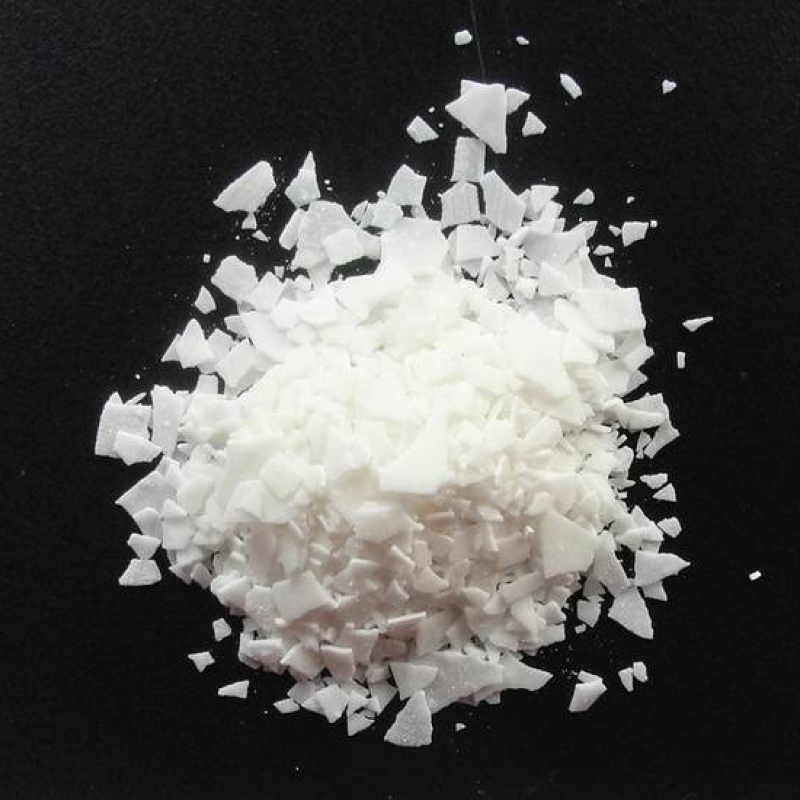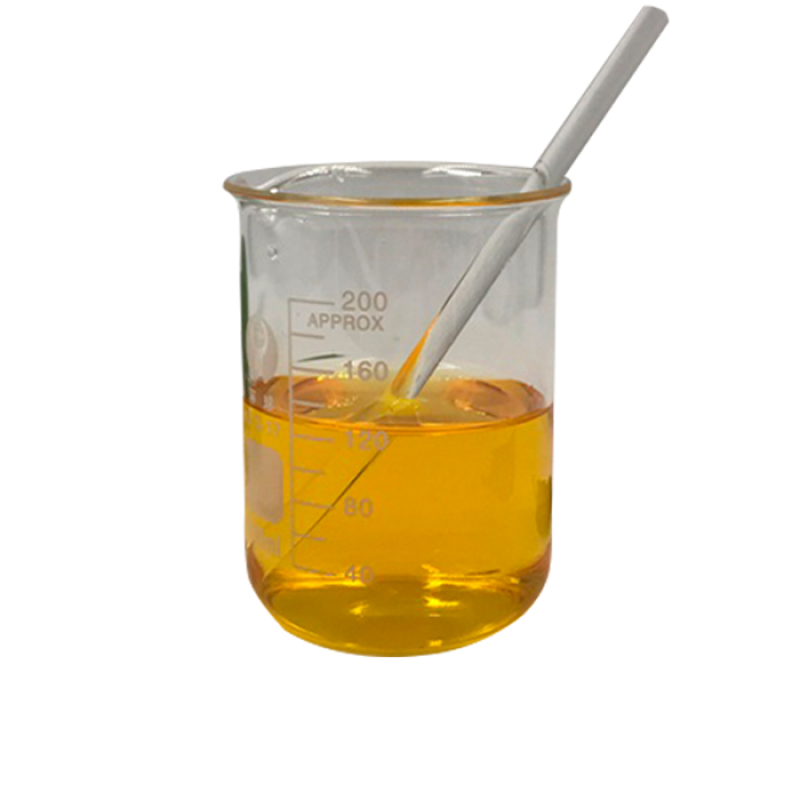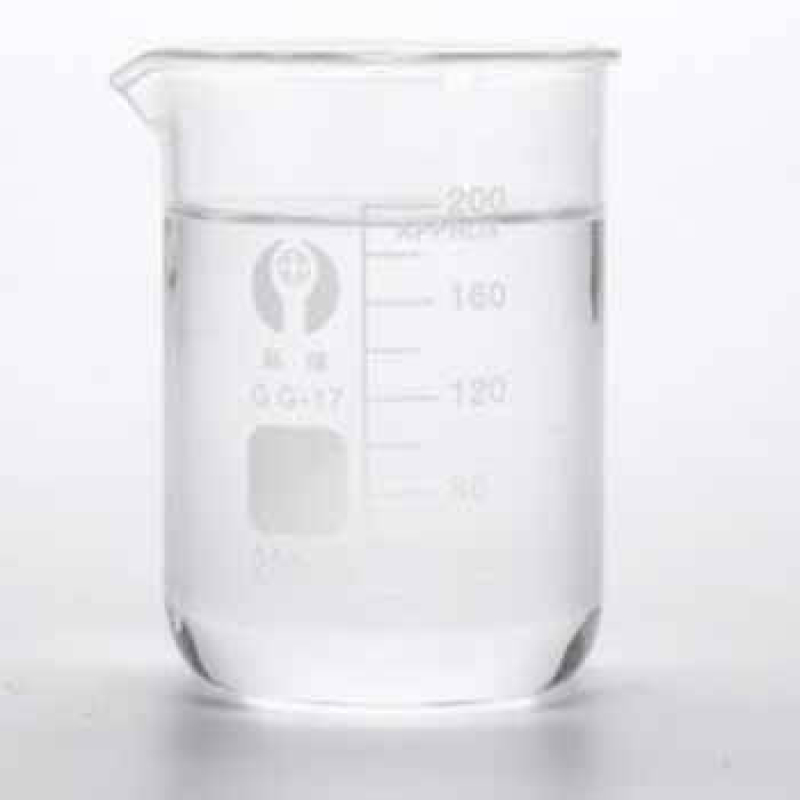Petrolatum CAS#8009-03-8Petrolatum (Vaseline) is the malthenes purified from lubrication oil, the combination of residue oil and cerate. It is an necessary lubricant for medicines, cosmetics, first-class chemical uncooked substances and precision instruments. In China, foremost vaseline merchandise encompass normal vaseline, industrial vaseline and clinical vaseline.
Contact Now
Products Description of 2,5-Dimethyl-2,5-hexanediolCAS#110-03-2This product is white crystal, m.p.88.5~90℃, b.p.214~215℃, relative density 0.898, soluble in water, acid, alcohol, acetone, insoluble in benzene, carbon tetrachloride and other organic solvents2,5-Dimethyl-2,5-hexanediol Chemical PropertiesMelting point 86-90 °C (lit.)Boiling point 214-215 °C (lit.)density 0,898 g/cm3vapor pressure 0.18Pa at 20℃refractive index 1.4429 (estimate)Fp 126 °Cstorage temp. Keep in dark place,Sealed in dry,Room Temperaturepka15.07±0.29(Predicted)form Crystalli
Contact Now
Products Description of 1,3-Dioxan-2-one CAS#2453-03-4Used to synthesize polytrimethylene carbonate (PTMC)1,3-Dioxan-2-one Chemical PropertiesMelting point 45.0 to 49.0 °CBoiling point 135°C/4mmHg(lit.)density 1.200±0.06 g/cm3(Predicted)storage temp. under inert gas (nitrogen or Argon) at 2-8°Csolubility soluble in Methanolform powder to crystalcolor White to Almost whiteSafety InformationRisk Statements 22-36Safety Statements 24/25HS Code 29147000Factory and Equipment ShowFast delivery timeInventory 2-3 working days New production 7-10 wo
Contact Now
Products Description of Methyl 3-amino-2-pyrazinecarboxylate CAS#16298-03-6The molar refractive index of methyl 3-aminopyrazine-2-carboxylate is 38.44, the molar volume (m3/mol) is 116.0, the isotonic volume (0.2K) is 326.2, the surface tension (dyne/cm) is 62.4, and the polarizability (10-24cm3) is 15.24.Methyl 3-amino-2-pyrazinecarboxylate Chemical PropertiesMelting point 169-172 °C (lit.)Boiling point 300.8±37.0 °C(Predicted)density 1.319±0.06 g/cm3(Predicted)storage temp. Keep in dark place,Sealed in dry,2-8°Csolubility Chloroform, Methanolform Crystallin
Contact Now
Products Description of Piperonyl butoxide 95% CAS#51-03-6Synergyl ether can improve the insecticidal activity of pyrethrins and various pyrethroids, rotenone and carbamate insecticides. It can also improve the insecticidal activity of fenitrothion, dichlorvos, chlordane, triclofenac and atrazine. etc. have a synergistic effect and can improve the stability of pyrethrum extract. When house flies are used as the control object, this product has a higher synergistic effect on permethrin than octachlorodipropyl ether; however, it cannot synergize cypermethrin in knocking down house flies.
Contact Now
Products Description of 3-MERCAPTOPROPIONIC ACID CAS#107-96-03-Thiopropionic acid is a direct raw material in organic chemicals and is used in pharmaceutical intermediates and electronic chemicals; it is used as an intermediate in the pharmaceutical Fenal, and it is also used as a stabilizer for polyvinyl chloride.
Contact Now
Products Description of Polysiloxanes CAS#63148-53-8Polysiloxanes (CAS#63148-53-8), also known as silicones or dimethyl siloxanes, are polymeric compounds characterized by their unique properties. Here is a rigorous and factual product description:Product Name: PolysiloxanesCAS Registry Number: 63148-53-8Physical Description:Polysiloxanes are typically colorless to pale yellow, oily liquids with a low surface tension.
Contact Now
Butylated Hydroxytoluene CAS#128-37-0Aluminium Sulfate (CAS#16828-11-8), also known as Alum, is a white crystalline compound widely recognized for its effectiveness in water purification and its versatility in various industrial applications.
Contact Now
Triethylmethylammonium chloride Chemical PropertiesMelting point 282-284 °C (lit.)storage temp. Inert atmosphere,Room TemperatureWater Solubility Soluble in waterform Powdercolor White to Almost whiteBRN 3912434CAS DataBase Reference10052-47-8(CAS DataBase Reference)EPA Substance Registry SystemEthanaminium, N,N-diethyl-N-methyl-, chloride (10052-47-8)Safety InformationHazard Codes XiRisk Statements 36/37/38Safety Statements 26-36WGK Germany 3TSCA YesHS Code 29239000Factory and Equipment ShowFast delivery timeInventory 2-3 working day
Contact Now
Products Description of Ammonium Superphosphate (SSP) CAS#7758-23-8Ammonium Superphosphate (SSP), with the CAS number 7758-23-8, is a highly effective fertilizer used in agriculture to enrich soil with essential phosphorus and nitrogen.
Contact Now
Products Description of Glutaraldehyde CAS#111-30-8Glutaraldehyde is an important saturated straight-chain fatty dialdehyde. Although there are many reports on the toxicity of glutaraldehyde, the cross-linking of glutaraldehyde has many advantages and has been accepted in clinical applications.
Contact Now
Products Description of Triethylamine CAS#121-44-8 Triethylamine (molecular formula: C6H15N), also known as N,N-diethylethylamine, is the simplest homotrisubstituted tertiary amine. It has the typical properties of tertiary amines, including salt formation and oxidation. Triethylamine has no reaction in the Hisberg reaction. It is a colorless to light yellow transparent liquid with a strong ammonia odor and a slight smoke in the air. Boiling point: 89.5℃, relative density (water = 1): 0.70, relative density (air = 1): 3.48, slightly soluble in water, soluble in ethanol and ether.
Contact Now
Products Description of 2,3-Difluorophenol CAS#6418-38-82,3-Difluorophenol is a chemical substance.2,3-Difluorophenol Chemical PropertiesMelting point 39-42 °C (lit.)Boiling point 54 °C/25 mmHg (lit.)density 1.2483 (estimate)Fp 134 °Fstorage temp. Inert atmosphere,2-8°Cpka7.71±0.10(Predicted)form powder to lump to clear liquidcolor White or Colorless to Almost white or Almost colorlessBRN 2082265InChIKeyRPEPGIOVXBBUMJ-UHFFFAOYSA-NCAS DataBase Reference6418-38-8(CAS DataBase Reference)Safety InformationHazard Codes F,Xn,Xi,CRisk Statements&
Contact Now
Products Description of Pentaerythrityl Tetraisostearate CAS#62125-22-8Pentaerythritol tetraisostearate is a high molecular weight liquid oil with a molecular formula of C77H148O8 and a molecular weight of 1201.99. It is insoluble in water.Pentaerythityl tetraisostearate Chemical PropertiesOdorat 100.00?%. blandLogP32.456 (est)EPA Substance Registry SystemPentaerythritol tetraisostearate (62125-22-8)Product Application of Pentaerythrityl Tetraisostearate CAS#62125-22-8It provides a moist and smooth feel to the hair and a very moist and non-greasy feel to the skin.
Contact Now
Products Description of Polyvinylpyrrolidone CAS#9003-39-8Polyvinylpyrrolidone, abbreviated as PVP, is a polymer of vinylpyrrolidone. Due to its different degree of polymerization, it is divided into soluble PVP and insoluble PVPP (polyvinylpolypyrrolidone). The relative molecular mass of soluble PVP is 8000-10000. It can be used as a precipitant and precipitate with polyphenols. With this method, it is easy for residual PVP to remain in the wine.
Contact Now
Products Description of 2-Chlorophenol CAS#95-57-8 o-Chlorophenol is a colorless to yellow-brown liquid, m.p.8.7℃, b.p.175℃, n25D 1.5565, relative density 1.265.
Contact Now
Products Description of Molybdate Orange CAS#12656-85-8 ,also known as Pigment Red 104, is an inorganic pigment that is widely recognized for its vibrant orange hue.
Contact Now
Products Description of Diphenyl Ether CAS#101-84-8Diphenyl Ether (CAS#101-84-8) is a colorless crystalline solid or liquid with a mild, pleasant aroma. It is characterized by its colorless appearance and melts at a point around 81 °F (27.2 °C). When the temperature exceeds this melting point, it transforms into a colorless liquid. Diphenyl Ether is known for its distinct, strong floral-green, metallic geranium-like scent and is insoluble in water.This chemical is widely used as a heat transfer medium due to its thermal stability and low vapor pressure.
Contact Now
Products Description of 3-Hydroxyphenylphosphinyl-propanoic acidCAS#14657-64-8Used in organic synthesis, manufacture of pesticides and pharmaceutical intermediates3-Hydroxyphenylphosphinyl-propanoic acid Chemical PropertiesMelting point 158.0 to 162.0 °CBoiling point 526.6±42.0 °C(Predicted)density 1.35±0.1 g/cm3(Predicted)vapor pressure 0Pa at 20℃storage temp. 2-8°Csolubility soluble in Methanolform powder to crystalpka2.21±0.50(Predicted)color White to Almost whiteWater Solubility 31.183g/L at 20℃LogP-4.2 at 20℃CAS DataBase Reference14657-64-
Contact Now
Products Description of Diazolidinyl UreaCAS#78491-02-8Properties: White powder, hygroscopic, odorless or with characteristic odor.Diazolidinyl Urea Chemical PropertiesBoiling point 421.04°C (rough estimate)density 1.4734 (rough estimate)vapor pressure 0Pa at 20℃refractive index 1.6590 (estimate)storage temp. 2-8°Csolubility Water (Slightly)form Solidpka11.22±0.46(Predicted)color White to Off-WhiteWater Solubility 1000g/L at 20℃Merck 14,3000Stability:Stable.
Contact Now
Products Description of Tetraethylammonium Chloride CAS#56-34-8 Tetraethylammonium chloride is an organic compound with the chemical formula C8H20ClN.
Contact Now
Products Description of 1,2,3-1H-Triazole CAS#288-36-8Crystallization.
Contact Now
Products Description of OP 935 CAS#225789-38-8 As a new type of phosphorus-based flame retardant, diethylaluminum hypophosphite has high thermal stability, chemical stability and environmental friendliness, and can be used as an excellent polymer material flame retardant to replace environmentally harmful halogen flame retardants.OP 935 Chemical PropertieWater Solubility 1.6g/L at 25℃CAS DataBase Reference225789-38-8Product Application of OP 935 CAS#225789-38-8 The main chemical bonds in the structure of diethyl aluminum hypophosphite are P-C, P=O, P-O, and its flame r
Contact Now
Products Description of 5-Bromo-8-nitroisoquinoline CAS#63927-23-1It is a light yellow solid powder at room temperature and pressure.
Contact Now



































